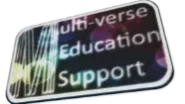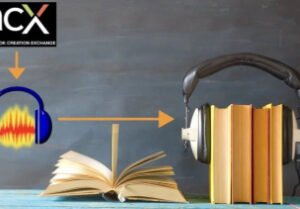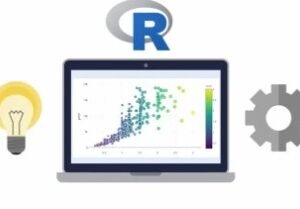Accent-Reduction/American English Pronunciation Practice
- Description
- Curriculum
- FAQ
- Reviews
Favorably and extensively reviewed and proven to be effective by students, the accent-reduction and/or speech synthesis program developed from dissertation research using multi-media methods. The instructor has taught this subject for over eight years to public and private causes, as library, individuals, and language schools.
The emphasis is on an ecological approximation of the various sounds, rhythms, inflections, and patterns the spoken language integrates. The goal is to develop a balanced, systematic voice/accent portfolio/profile based on lesson/MP3 recordings using digital audio monitoring software. Students obtain a repository of audio files during each lesson to be used for actively evaluating individual expression while waiting in line, traffic, and during breaks.
The course is configurable according to the following respective or interchangeable options:
1. Study with instructor asynchronously by sending those individually collected assets to the instructor via email or cloud link for feedback, revision suggestions, and customization of additional samples to further upgrade accent acquisition. This may also include written feedback related to specific samples and cue points or benchmarks of the transmitted samples in Goldwave or Wavepad for insight into necessary optimization. This option does not require any formal lesson or meeting.
2. Study with instructor in real-time via meeting app to collect and cultivate accent and voice recording assets using the same and considerably more upgrade tools and resources.
3. Study more per lecture and presentation than active practice and collection of accent assets in a portfolio: this option or track covers and surveys a wide, varied inventory of topics The course encompasses over 135 pdf and word files, along with multimedia items, to be surveyed.
Each option will require some degree of independent study with the video assets, the omni-phrase guide, the accessible samples, and the collection of new, stylistic samples with the software, comparing, contrasting, and upgrading the recordings of voice and accent.
Sources:
Burrkowsky, Mitchess (1969) Teaching American Pronunciation to Foreign Students. New York: Warren Green, 1969.
Morton, H., Gunson, N., Jack, M. (2012). Interactive Language Learning through Speech-Enabled Virtual Scenarios. Advances in Human Computer Interaction. doi:10.1155/2012/389523.
Zheng, D., Young, M. F., Wagner, M. M., & Brewer, R. A. (2009). Negotiation for action:
English language learning in game-based virtual worlds. The Modern Language
Journal, 93(4), 489.
minimum configuration for online: Intel Core Duo or AMD Athlon 64 X2, Audacity or Wavosaur, 5 MBPS Internet, webcam with mic, SSD Drive, Windows 7 or other OS
recommended: Intel I7 or AMD Ryzen 5-7, Goldwave Audio, MPOW USB headset (Mpow USB Headset/3.5mm Computer with Noise Cancelling Mic Stereo Wired Headphone), 10 MBPS Internet, M.2 Drive, Windows 10 64bit.
-
1Voiced / Unvoiced Part 1 of 3: aerodynamics, symmetry, and geometryVideo lesson
English language features a musical phonological profile or acoustic blueprint that instrumentalizes voiced and unvoiced sounds. Vowels are unanimously voiced or mobilize the vocal cords. Consonants categorize into paired voiced and unvoiced sounds. This voiced/unvoiced schematism is integral to approximating and acquiring an authentic North American English accent and pronunciation. This lesson module presents a multimedia practice of differentiating between voiced and unvoiced vocal sounds and also encourages the shift or predisposition toward more musical, vibrant vowels that emanate from mobilized, liberated vocal cords, which then inflect and transform your voice into a resonant tool for communication and discourse. Listen and observe carefully how the student in the recording pronounces the word "other" and endeavor to practice similarly using the recommended free or very affordable audio editing software apps for various OS. There is also a compatible handout with further examples labelled "omni-topics."
-
2Voiced/Unvoiced Part 2 of 3: D/T + relation to vowel glidesVideo lesson
The voiced/unvoiced quality in the previous lesson extends to consonants, too; however, the difference is that the 21 consonants are divided into voiced and unvoiced pairs, whereas all vowels in English are voiced. This lesson practices and trains the distinction and solid differentiation between voiced "D" and unvoiced "T," as well as the distinctive, musical "i" + "w" sound. The [iw] sound colloquially and usually substitutes for a compressed, windy "yoo" sound. Practice with the examples, as "dude" and "Iguana."
-
3Sequence vowels + consonants Part 1 of 2: E + L Sounds + glottal reductionVideo lesson
The "L" sound is a stumbling block for specific linguistic backgrounds, as acoustic blueprints that are intensely glottal. The approximant, alveolar "L" in English is produced with the tip of the tongue forming a sharp, pointed tip, which then creates "bee sting" type impulses against the root of the front upper teeth. In short, the blade of the tongue forms an escalator that leads diagonally up against the back of the teeth. Students will be able to reflect upon the distinctive sequencing and differentiation of their E + L sounds and become motivated to apply specific concepts to their pronunciation and accent acquisition, using everyday, familiar words for optimal practicing: "Tell me, who is Helen?"
-
4Relative/short vowels and intro to semi-vowelsVideo lesson
Practice relative/short vowels by observing and appraising the blueprint, aerodynamics, and shapes of the sounds and patterns. All English vowels are voiced and produced with mobilization of the vocal cords, vibrating and resonating. Relative vowels reflect simple shapes with incremental tonal shifts at the beginning of the sounds and a gradual decay, giving them often oval shapes. They are comparatively isomorphic and abrupt. They are elements in more complex vowel structures as alphabets and diphthongs. Therefore, practice the relative vowels first before moving on to alphabet vowels and more complex vowel configurations. In this lesson, students should practice ae, ah, e, and i, and become acquainted with semi-vowels. Watch the video recording, then continue to practice with the omni-phrase study guide, endeavoring to approximate the distinctive blueprints to collect a series of examples.
-
5Semi-Vowels + anatomical/kinesthetic traitsVideo lesson
Practice semi-vowels that contribute musical and rhythmic qualities to vowels and enable the vowels to distinguish themselves and become well-rounded in their materialization. The applicable recording indicates that students from different linguistic backgrounds exhibit the common, relatable error of glottalizing or distorting the vowel with a glottal precursor. There are specific strategies and maneuvers to achieve distinctive, exemplary blueprints and examples of the semi-vowels that are explained in the recording. Continue to practice the semi-vowels topic with the examples on the omni-phrase study guide and omni-topics handout.
-
6Diphthongs + semi-vowels practiceVideo lesson
In this unit, the alphabet vowels and related vowel combinations are practiced and trained. Indeed, North American English differs considerably from other inflections of English for these complex, distinctive vowel structures. The aperture of the mouth demonstrates strong vertical kinesis or descension in words as "buy/bye" and "sigh" and the semi-vowel "y" from the previous unit releases to connect with the final "n" to articulate "sign." Additionally, the diphthongs are ligaments and precursors for any "R" controlled vowel schematism. Students practice mobilizing and dilating the aperture of the anterior vocal apparatus, coordinating corners of mouth, jaw, and tongue to synthesize these vowels.
-
7Syllable Stress + Schwa Practice Part 1Video lesson
English is a stress time language, meaning that stress or emphasis on particular syllables is meaningful and consequential. The denotation of words can shift completely based on where the stress resides in the syllables. For instance, the word college features stress on the first syllable and the second syllable is neutralized or a schwa sound. This is different in the world collage, where minimally the second syllable is definitely stressed or emphasized. Were any speaker to neutralize or decimate the second syllable the meaning of the word would certainly shift toward the former word or become ambiguous. This unit introduces these syllable stress concepts and provides various examples of slippery words where the stresses are irregular and peculiar. Students should practice with these examples on the omni-phrase study guide and collect a portfolio of examples that reflect benchmarks for command of word stress placements.
-
8Syllable Stress + Schwa Practice Part 2Video lesson
The schwa is the most frequent vowel sound in English speech. It gives English a unique sound and rhythm, as well as being a major factor to an English accent when Anglophones speak other languages. How to make the sound: make the schwa with your jaws slightly open, your lips relaxed, and your tongue in a medially elevated configuration similar to relative vowel /i/. The schwa sound, therefore, is a key element or pivotal phonological quality to authentically approximate the acoustic blueprint of cosmopolitan English. The schwa is always the unstressed syllable in a word and also is a rhythmic, musical element that releases and balances any voiced consonant, as /n/, /b/, /g/, /z/ and so on. The schwa sound enables to differentiate and fulfill these consonants and contributes to a lucid, solid sequencing of phonemes, featuring details, nuances, and subtleties.
-
9Linking / Liaison + glottal reduction + vowel vibrancyVideo lesson
This is a capstone unit and linguistic competence to demonstrate cumulative skills and to reflect upon what has been practiced thus far. The linking or liaison schematism is another distinguishing feature of North-American English that differentiates from other inflections. Students practice integrating the /iw/ accent concept from unit two [put your shoes on] produce alphabet vowels and diphthongs with nuanced semi-vowels [know how to change a tire], and confidently place schwa sounds and improvise on syllable stresses [get a cup of water]. Students become acquainted and confident with the liaison between consonants and vowels to sequence and synthesize authentic sounding phrases that are not just phonetic reproductions, as English is a non-phonetic acoustic language that is a derivative quality from French. Yes, English sounds very different from how it is written and encountered visually. Indeed, this unit is a critical milestone to surpass, consisting of the entirety of students' portfolio and redeems every benchmark in the portfolio for demonstration of proficiency.
-
10Intonation, Doppler & PitchVideo lesson
This is a capstone unit and linguistic competence to demonstrate cumulative skills and to reflect upon what has been practiced thus far. The intonation, cadence, or stylistic musical schematism is another distinguishing feature of North American English that differentiates from other inflections. Students confront and practice musical terms and connect to the tonal scale or solfège, learn about the iconic, obligatory doppler effect in English, practice rising and falling, or staircase intonation based on placing schwa sounds and alternating syllable stresses, become conscious of the difference between content and function words, and train with various recurrent, schematic patterns, as items in a series and creating affects that are conventional. Additionally, students can at this point coordinate and integrate liaisons and linking concepts from the previous unit to consolidate and converge upon a symmetric, dense acoustic blueprint. English is a non-phonetic acoustic language that is a derivative quality from French. Yes, English sounds very different from how it is written and encountered visually. Indeed, this unit is a critical milestone to surpass, consisting of the entirely of students' portfolio and redeems every benchmark in the portfolio for demonstration of proficiency. Students will be able to reflect upon their intonation and become motivated to apply specific concepts to their pronunciation and accent acquisition, using everyday, familiar phrases for optimal practicing.









